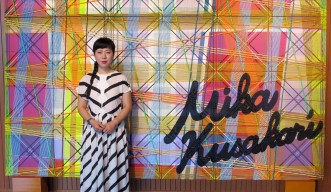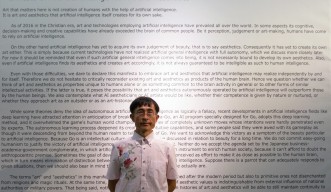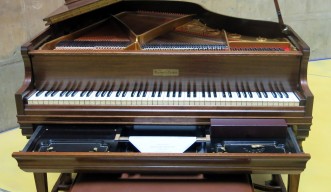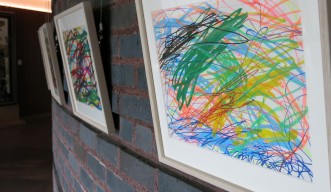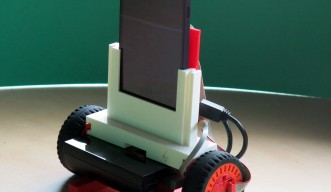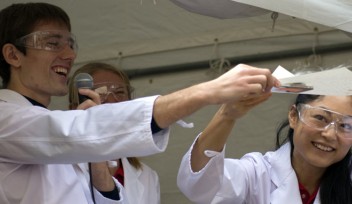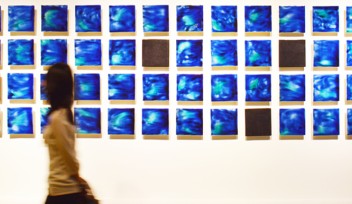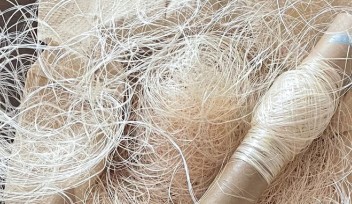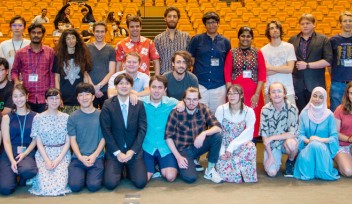Putting the Art in Artificial Intelligence
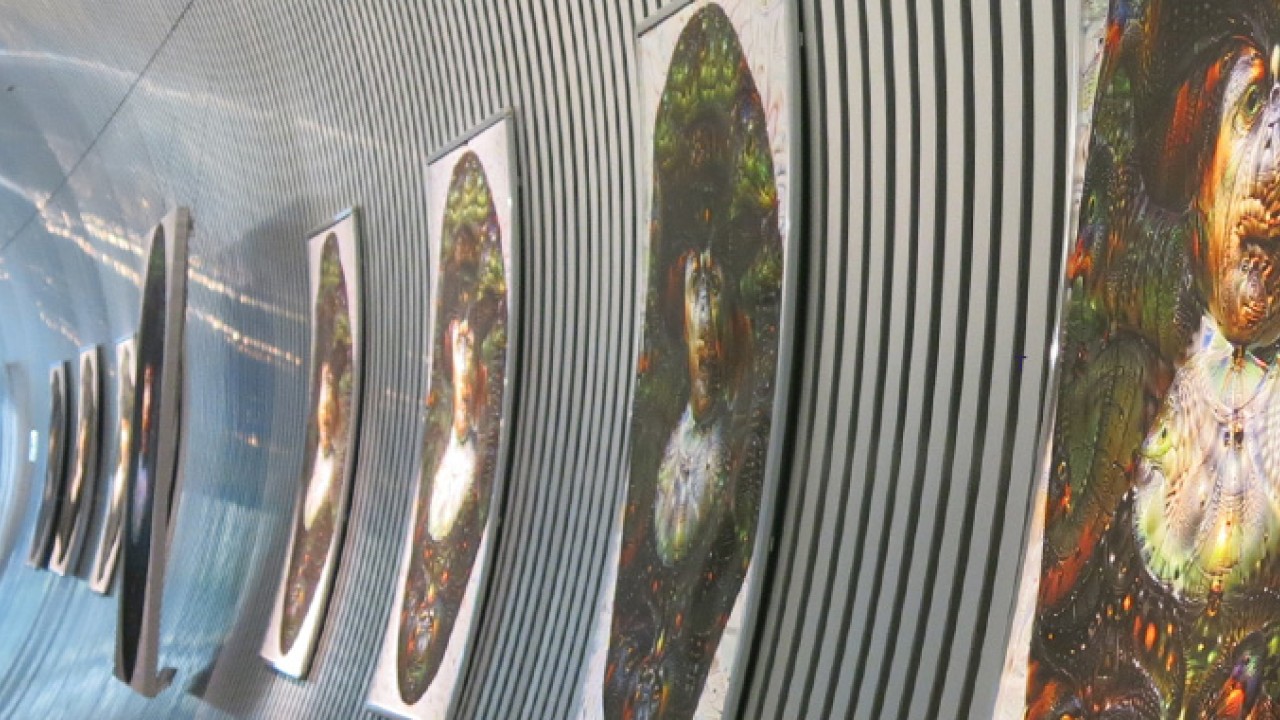
When science and art collide, the results can be both brilliant and bizarre. At the Okinawa Institute of Science and Technology Graduate University (OIST), the world’s first interdisciplinary artificial intelligence (AI) art exhibition is blurring the boundaries between man and machine.
AI, intelligence displayed by machines, is a rapidly expanding field. Computers have already exceeded human cognitive abilities in some areas. However, AI is yet to acquire its own aesthetics, the appreciation and judgement of beauty. Is it possible that, in the future, AI might acquire consciousness and create art in its own right? What would this mean for the distinction between computers and the human mind?
These are just some of the questions being explored in the Artificial Intelligence Art and Aesthetics Exhibition at OIST. The exhibition is the first of its kind, combining visual art, music, literature, poetry and scientific research. “Art and Science are both ways of seeing, and our communities can learn from each other to develop new insights that will prepare humanity for the radical changes to society that are inevitable in the next decades,” says Peter Gruss, President of OIST. On visiting the exhibition, expect to find a self-playing piano, smartphone robots and even artwork by chimpanzees.

“This exhibition is about exploring the idea of art that has not yet been achieved,” says Mika Kusakari, the exhibition curator and artist. “We want visitors to imagine what machine art with machine aesthetics might look like; this is art which is made by AI and which AI considers to be beautiful” she says. The exhibition uses both human-made art and machine-made art to encourage visitors to imagine what AI art might look like in the future.
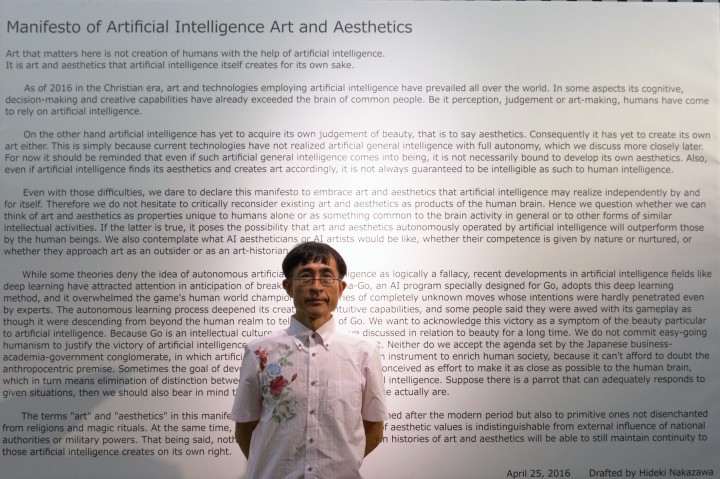
Hideki Nakazawa, the exhibition curator and artist, believes that, one day, AI artists will surpass human artists. Machines can already achieve many things that humans cannot. For instance, the exhibition includes a self-playing piano which, although it may seem like a relic from a 1920s dance hall, is capable of musical feats beyond the capabilities of any human musician. Humans players have many limitations, possessing only ten fingers being the most obvious. The self-playing piano can be used to explore new musical techniques, such as time signatures with square root numbers. It can also play interesting compositions, such as a piece in which the ‘left hand’ starts playing slowly and speeds up whilst the ‘right hand’ starts playing fast and slows down; this would be extremely difficult for a human player.
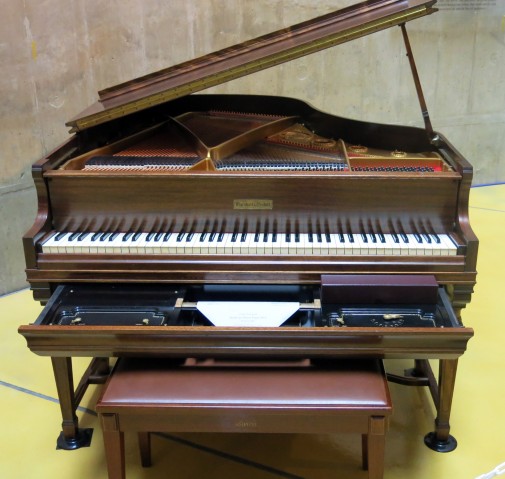
Machines can produce art in a variety of ways, both virtually on a screen and physically on a canvas; for example, there are robots that can paint. There are also AI artists creating music and poetry. However, for the moment, AI art is limited by the fact that it requires human programming. AI is yet to create art spontaneously, to create art simply for the sake of beauty.
The idea of ‘art for art’s sake’ is a key theme in the exhibition. This idea is explored in an installation containing several paintings by chimpanzees. If chimpanzees produce drawings in return for a banana, this is not considered to be art. However, if they make art without any prospect of reward, as in the paintings displayed in this exhibition, this implies they have some appreciation of aesthetics and are producing art for art’s sake.
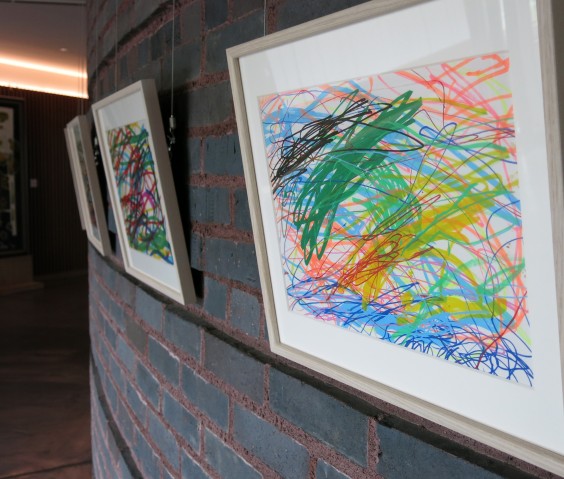
Similarly, if machines start to produce art without human intervention, this implies that they have acquired an appreciation of beauty. Researchers, such as Professor Kenji Doya from OIST’s Neural Computation Unit, are working on ideas like this right now. As part of the exhibition, Doya and his team are investigating whether, by adding wheels to smartphones, they can make robots that are capable of creating their own goals.
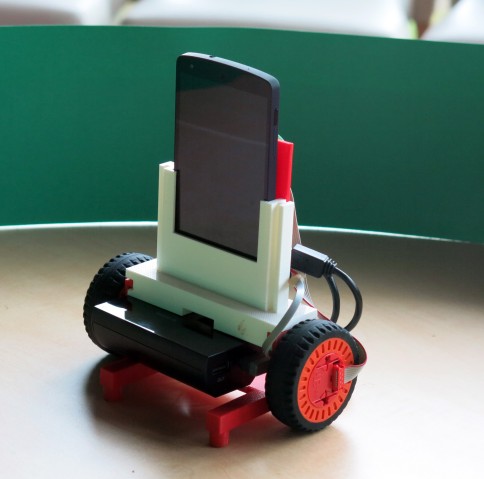
Meanwhile, as the scientists are working in their labs, AI is creating art in real time throughout the exhibition. For example, ‘About a Theory of Graffiti’ is an art installation by yang02 in which AI generates its own graffiti. The piece comprises a large plotter drawing machine which draws patterns onto concrete blocks using water. The machine has taught itself to do graffiti by studying images of graffiti online. These developments in both science and art are a step towards creating a new generation of AI artists.
“So what will be the influence of AI in the world of culture?” asks Gruss. “Will computers teach themselves musical composition and produce new symphonies, operas, harmonic variations at will? Will AI linked to 3D printers produce completely new forms of sculpture? Can computers study every novel ever written and then write great works of their own? The answer is almost certainly - we do not know. This is why this Artificial Intelligence Art and Aesthetics Exhibition is so important, as it brings together experts in many fields to start the discussion that will eventually lead to answers,” he says.
It is difficult to say when, if ever, AI will gain a sense of aesthetics and produce art for art’s sake. “I think that consciousness has to come first and only then can machines gain a true appreciation of beauty,” says Nakazawa. This might sound like the stuff of science fiction but, with the speed of technological developments in the field, it may not be too long before we see the first AI art exhibition with no human intervention at all.
For press enquiries:
Press Inquiry Form










